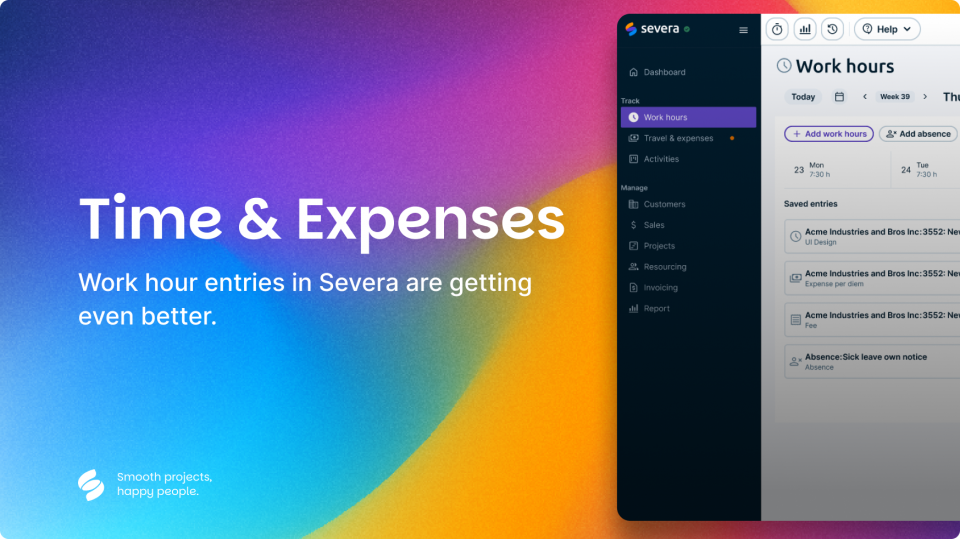Steer Your Projects and Business in the Right Direction with Project Forecasting

When we hear the word forecasting in a business context, our minds often jump to corporate earnings reports or sudden stock market drops. While forecasting is a regulatory must for public companies, it’s also an untapped source of clarity and control for smaller, expert-driven businesses.
In companies where success relies heavily on delivering client projects, forecasting is not just useful – it’s essential. It helps you predict outcomes, improve profitability, and make smarter decisions. So why don’t more businesses embrace it?
The truth is, many don’t have the right tools or they assume it’s too complicated. And let’s face it, when business feels like it’s running “well enough,” the drive to forecast often takes a backseat.
But here’s the thing: with the right system, forecasting becomes easy, and the benefits quickly become obvious.
What Is Project Forecasting, Exactly?
At its core, project forecasting means estimating a project’s key figures ahead of time e.g. things like workload, budget, timeline, staffing, revenue, and profit. These estimates are based on the best information available and get updated as the project progresses. Ideally, you’ll forecast from the moment a project is proposed, continuously refining your estimates with real-time data. At a minimum, every company should forecast sales, billing, resourcing, and costs.
But for forecasting to become a natural part of how your company works, it must be seamless. That’s where a dedicated system like Severa comes in.
Severa simplifies the process, integrates forecasting into your daily routines, and provides insights without the manual hassle.
Why Project Forecasting Matters To Everyone
When forecasting is part of your project workflow, everyone wins.
Salespeople can easily enter a project’s sales price and closing probability, building a reliable sales pipeline. Project managers can convert proposals into project plans, i.a. estimating revenue, expenses, workload, and timelines. This feeds into forecasts for billing, costs, and resource allocation.
Rather than leaving forecasting to top management, involve the people closest to the work, such as project managers and team members. When the whole team contributes, forecasting becomes more accurate and transparent. Over time, everyone gets better at estimating and the whole company gets better at delivering
Key Forecasts Every Project Company Should Track
1. Sales Forecast
Sales forecasting starts with estimating the value of opportunities and their likelihood of closing. In Severa, salespeople can assign probabilities to each deal based on its stage in the pipeline or fine-tune those numbers based on experience.
These forecasts provide early visibility into future revenue and help identify when to ramp up lead generation. They’re also great for self-management, showing each salesperson how close they are to their targets.
2. Billing Forecast
Most businesses already track billing, but forecasting it takes things a step further. Forecasts can be broken down by employee, client, or project and refined over time.
For fixed-price projects, use the agreed billing schedule. For hourly work, calculate future billing based on staffing plans and billable rates. Recurring revenue (like software subscriptions) can also be forecasted, helping you spot upcoming contract expirations or revenue gaps.
Billing forecasts help managers balance workloads, identify capacity issues, and even plan future hiring. They also give employees a clearer view of how their work translates into billable value.
3. Resourcing Forecast
Before any project kicks off, you estimate the effort involved, the team needed, and the timeline. This forecast guides your resource planning and with Severa, you can easily compare planned vs. actual hours as the project moves forward.
Resourcing forecasts show who’s working on what and when. They also highlight employee workloads, time off, and utilization rates, helping prevent burnout and overstaffing. For sales, these forecasts inform realistic delivery timelines and resource availability.
4. Cost Forecast
To understand your true project margins, you also need to forecast costs, not just billing.
Start with labor costs based on resource plans. Then add estimates for subcontractors, materials, or any external services (unless billed directly to the client). While surprises can happen, a detailed upfront forecast gives you a solid grip on profitability from day one.
One System, All Forecasts
Severa pulls all your project and forecasting data into a single, easy-to-use platform. It connects sales, project management, and financial forecasting in real time by generating reports and insights for everyone, from project teams to executive leadership.
Forecasting doesn’t have to be time-consuming or complex. With the right system, it becomes a natural extension of how your business works. From empowering your people to improving your outcomes, and keeping your projects (and your company) on the right track.
Smooth Projects, Happy People.
